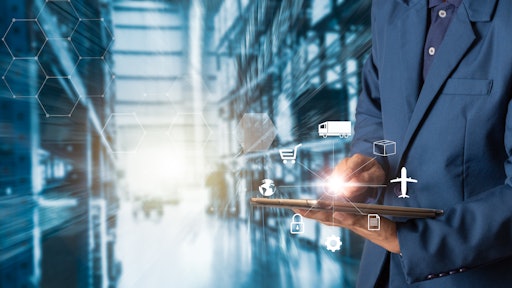
A time for change has come for operating models of shipping and logistics providers as digital technology continues to advance within the industry. As e-commerce grows, supply chain strategies need to shift to cater to the high demand of same-day delivery purchases. New self-learning algorithms and collaboration are key items during the change.
Logistics and Everything-as-a-Service
Subscription-based models will continue to evolve digital transformation as it is predicted to grow by more than 38 percent by 2020.
Everything-as-a-service is beneficial because the consumer receives continuous services and the producer gets a long term contract with the consumer. This model does not require the consumer to make a large investment, in the beginning, allowing for vertical and horizontal scaling.
Advanced TMS can also implement the model of software-as-a-service by automating global logistics for commodity traders, food producers, mining and metals, retail, manufacturing companies and other large shippers.
"In a system notorious for inefficiency, our solutions-focused TMS streamlines workloads, saving over 50,000 hours of human time thus far," says Jeff Wehner, COO and co-founder at Haven Inc. "Our tools unlock shipment data that otherwise gets buried or lost in emails and phone calls, and turns that information into actionable insights that make your work easier and more efficient."
Autonomous Mobile Robotics are Changing the Logistics Industry
The global logistics and warehouse robot market is forecasted to grow exponentially by the year 2021 reaching $14.43 billion due to the increasing need for industry automation. Robots provide a cheaper source of labor for businesses, require less time to train than the human workforce and eliminate the amount of human error. They can perform more efficiently in tasks such as picking up and unloading containers, home deliveries and sorting centers.
Goods-to-person picking robots can be programmed to move through designated routes in the warehouse and move product from stations to workers, eliminating a significant amount of time. Due to upgrades in mobility, artificial intelligence and sensors, the robots can be used in almost any environment.
Meanwhile, self-driving forklifts possess more complex navigation features, scanners and audio and visual indicators to safely move about a warehouse. They can detect an object and adjust their course accordingly. For example, the ZF Innovator Forklift can locate goods in a warehouse and when they are scheduled to arrive, optimizing the loading process, creating tasks and update the ERP system of product placement and movement.
Additionally, unmanned aerial vehicles have RFID-scanning technology to give companies real-time inventory visibility into their warehouse. They can perform inventory sweeps then upload the results to any inventory management systems. Sensors on the aerial vehicles prevent collision and enable them to fly in unique layouts.
Unlocking Transparency in Supply Chain through Blockchain
Blockchain will continue to be an incorruptible digital ledger of economic transactions that can be programmed to record not just financial transactions but virtually everything of value.
"The reason it's exciting in this industry is because the industry is full of trading. Blockchain brings about the hope of trust, the hope that we can have all still do that but then have a true system that we all agree that this is our general ledger," says Matt Tillman, CEO and co-founder of Haven. "What we have to do to make blockchain work is that a lot of companies have to agree that they want to use the same shared database."
In a global economy that is continually evolving, new trends have emerged in the shipping and logistics industry. The demand for a more efficient strategy in the supply chain has resulted in the utilization of the model over everything-as-a-service, autonomous mobile robots and the adoption of advanced supply chain and logistics platforms. The digital world will command for constant advancements as the global sharing economy continues to grow.


























